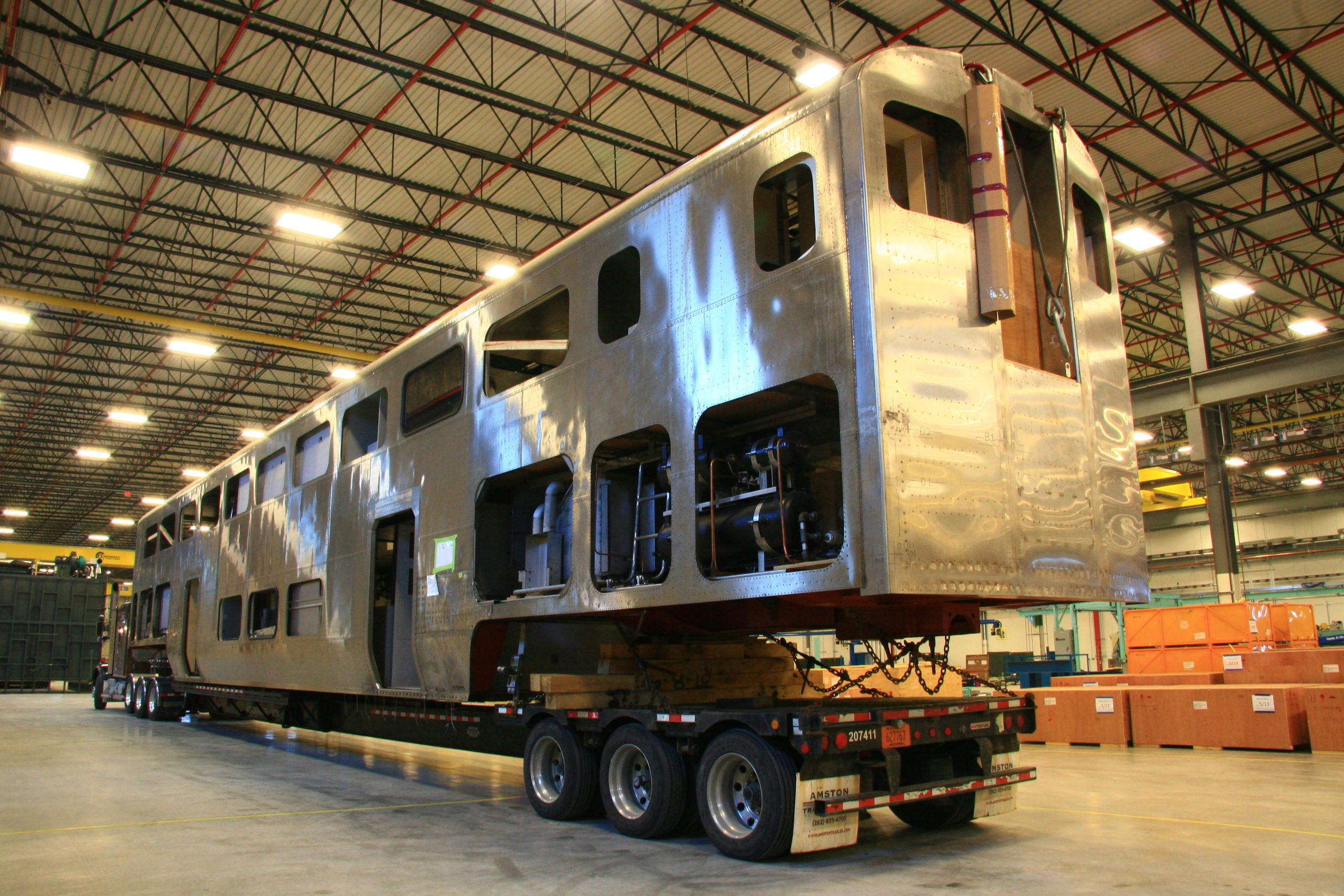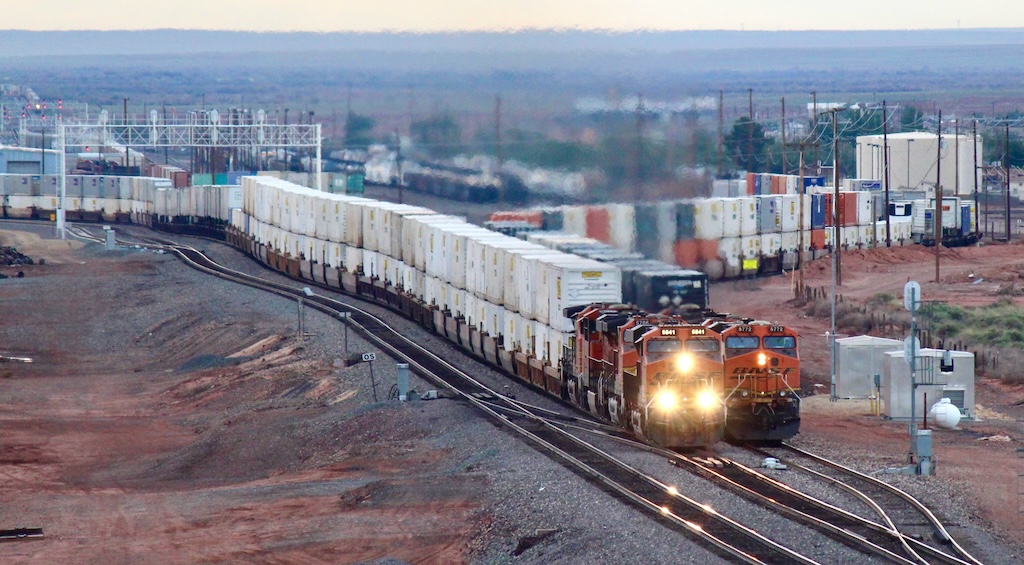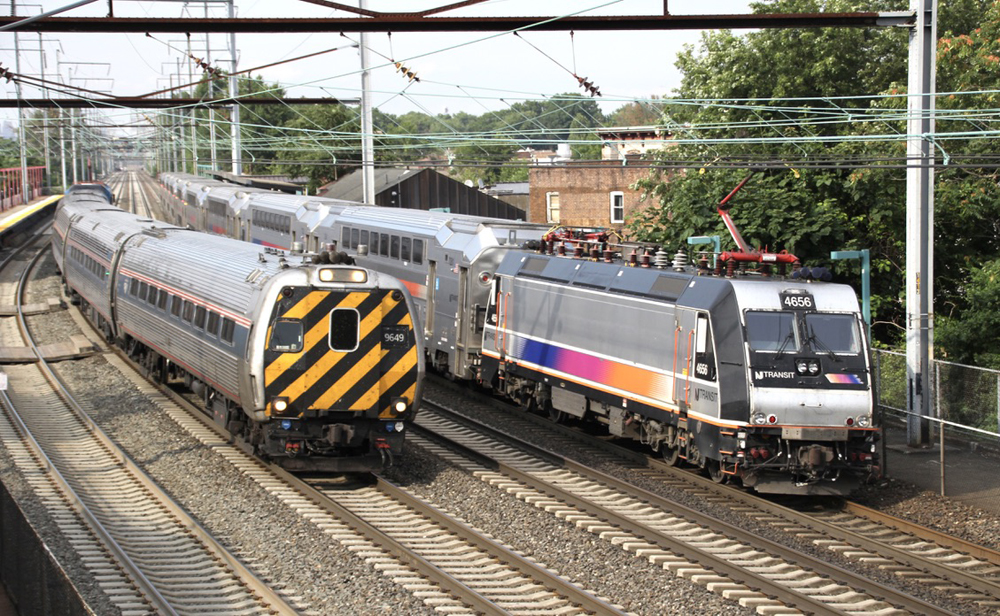Plant managers announced the layoffs on Thursday saying they are “… a result of complications during the testing phase of one of its prototype cars.”
Nippon Sharyo is building the cars to one design for state-sponsored Amtrak service in several states, including Michigan and California.
Bruce Roberts, Chief of California’s Division of Rail in the Department of Public Transportation, the agency that is overseeing the procurement for the states, tells Trains that he learned from Nippon Sharyo on Thursday that the company has yet to discover whether the 800,000-pound compression test failure which caused the shell to buckle was the result of poor workmanship, production failures, or a fundamental design flaw.
A compression test is meant to demonstrate how a car would respond in an accident, protecting passengers.
Local media report that as many as 98 workers will be laid off. The company says the workers will be from the fabrication and welding shops and will receive a severance package.
Expanding its plant in Rochelle to manufacture stainless steel shells in the United States instead of Japan was important to Nippon Sharyo in winning bids for multi-state contracts under the American Recovery and Reinvestment Act of 2009, which includes significant Buy America provisions. Delays in testing and producing the bilevel cars calls into question how the company will be able to fulfill its obligations.
The original request for proposals for 130 bilevels for California and the states of Michigan, Missouri, and Illinois, was based on specifications written by the Next Generation Corridor Equipment Pool Committee. The original contract was signed in 2012 with the requirement that all production had to be completed by 2017, though the order was subsequently upped to 175 cars with the excess available funding as a result of the Nippon Sharyo’s lower-than-expected bid.
Meeting that deadline is now in doubt.
“We won’t know the full ramifications of how seriously the project will be delayed until company engineers release their analysis and suggested remedies,” says Roberts. “A lot of verification by the states and the Federal Railroad Administration personnel will help determine what happens next.”
Roberts says Nippon Sharyo had completed four bi-level shells to the same specification to help meet production schedule requirements, so if underlying design is a problem, “we will have to start over. But the test did what it was designed to do,” he adds, “detect deficiencies before full production begins. Our goal from the beginning was to produce a safe and repeatable passenger rail product, and this is just another step in the process.”















I wish Amtrak went with a low level version of Kawasaki's bi levels that MARC has, they're proven and very successful and go 125mph.
Much more disturbing to me than these prototype shells failing is that Metra is sending its new electric bilevels BACK to Rochelle because welds are failing.
Don't hold your breath for PTC ! The Railroads will find a way to not do it .
OOH! come on,; each time a prototype of anything today suffers setbacks and gets behind schedule" the sky is falling" is the immediate reaction. It just ain't passenger rail cars as the Boeing Dreamliner and the Airbus A380 had constant setbacks during development that were cured. This includes the carbon fiber wing structure of the Boeing failing initial stress testing.
It does surprise me a bit that this happened as the cars are similar to the Metra bi levels currently in service.
Boeing solved the many problems with the Dreamliner's wings and electrics and the sky is falling predictions will be forgotten.
We gotta hope that governors of states such as the current gov in Springfield Il. can use this to get out of their share of the contract.
I read through all of the comments posted. Based on what I read, several posters failed to read the article and understand what was written.
When the Metra cars were built, as well as those used by VRE, and some others, the 'shell' was built in Japan and shipped to the US. There was a 'content' provision written into the contract that some % of the work was done within the USA. When the work was done in Milwaukee, the amount of work done by American workers and parts supplied by US vendors was very high.
The article states the content of this contract requires MORE work be done in the USA. The shells are now built at the Rochelle plant.
If these cars are to be put into service in 2017 – or later – PTC will be in place to prevent the collisions I assume a test like this is designed to simulate. Is it really necessary therefore to have such high design standards? The fast trains in Japan and France never run into each other, and I doubt if they are designed to withstand such a thing, because it is so unlikely to occur. Isn't this a case of over-engineering?
It's too damn bad Talgos weren't purchased. Now that's a tried and true train.
That's an odd business plan, build 4 protoytpes, destroy them, lay off production workers.
Mr. Soesbee raises an incisive point in his second paragraph that should not be disregarded lightly. Exactly who in the Federal government (beyond California DOT) is responsible for the oversight of these programs to ensure they meet the commitment made to Congress, and the public, to ensure 100% Buy American? Harry S. Truman was well known as a senator who never hesitated to investigate to ensure such contracts signed by the federal government were followed to the "T." But who in Congress will take-up that mantle now to protect the American taxpayer and workers?
This problem with Nippon Sharyo interestingly parallels another story here in TRAINS re Hyundai-Rotem bi-level cab cars on LA's Metrolink (please refer to that story for my more detailed commentary). Momentarily moving beyond the obvious bi-level engineering (or, re-engineering) issues here, this extensive (and excessive) delay will seriously impact Amtrak and the Midwest corridors. The Michigan 110mph track comes on line next year (to Chicago); several years later, it is expected for Illinois to complete its 110mph line (to St. Louis). As the commuter-design Horizon equipment is insufficient for even today's capacity needs, how will these higher speed lines increase frequencies, without the bi-levels? Also, will the dire need for the re-equipping of the Midwest routes lose the attention of Amtrak and Congress as the focus inevitably turns to how to finance the replacement of the Acelas and Amfleet used on the NE Regionals?
Compliance with the latest structural requirements (including crash energy management) is not an easy task, especially for a multi-level carbody. The configuration of the cars in question is quite different from a gallery car. Nippon Sharyo has a very capable structural engineering staff and I have no doubt they will solve the problems.
My biggest issue with the project is the radical departure the original requirement for true "100% made in America" that was touted when the PRIIA concept was being sold to the public and the US rail component manufacturers. Careful and unbiased examination would reveal many examples of Buy America work arounds to reduce costs.
Amtrak's intercity fleet is approaching the age of when it inherited all the equipment from the railroads. That's sad!
Don't panic folks. The is just part of the r+d. Better to find the failures now rather than in 5 years or so. More sensationalism headlines when reported this way.
Maybe they should have built them in Japan to the US standards and then shipped them to the US.
The old designs may not meet today's standards; I don't know that to be the case, but you need to check it out before having a knee-jerk reaction.
Really? What diifference are these cars from the ones Metra and others ALREADY have? BiLevels right? Structually it should be the same or better than Metra's cars. But I hope things better though, Budd, ACF and Pullman are long gone.
Brilliant, Paul Vinson. The Missouri River Runners between Kansas City and Saint Louis have been running with 1970's equipment. New coaches would help increse ridership. Thank you, globalists.
It is time that the tried and proven designs used by Pullman-Standard and American Car and Foundry from 1937 through the 1950's be adopted. So, dust off those blueprints from the mid-20th century and incorporate 21st century technology. The result would be a streamliner renaissance.